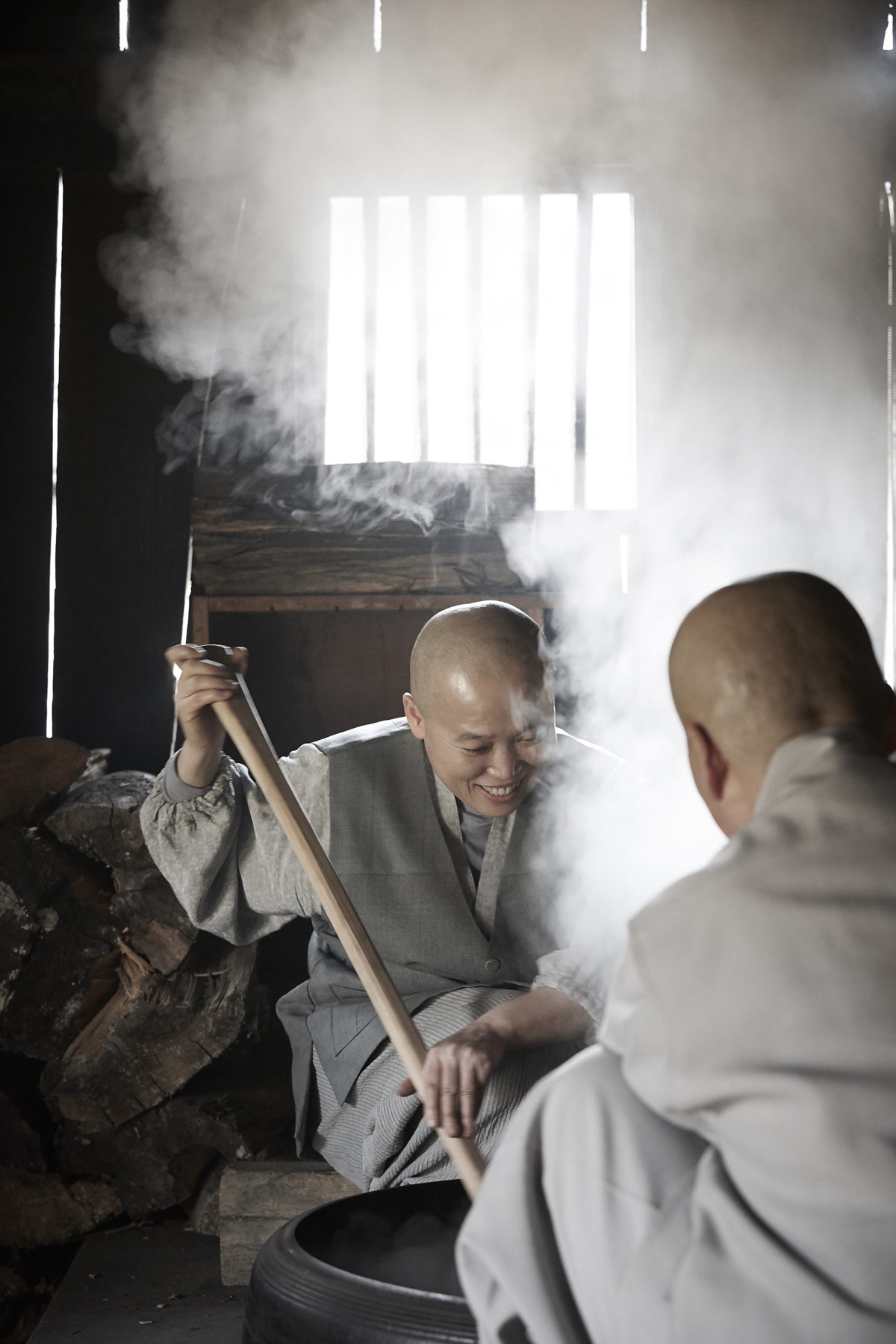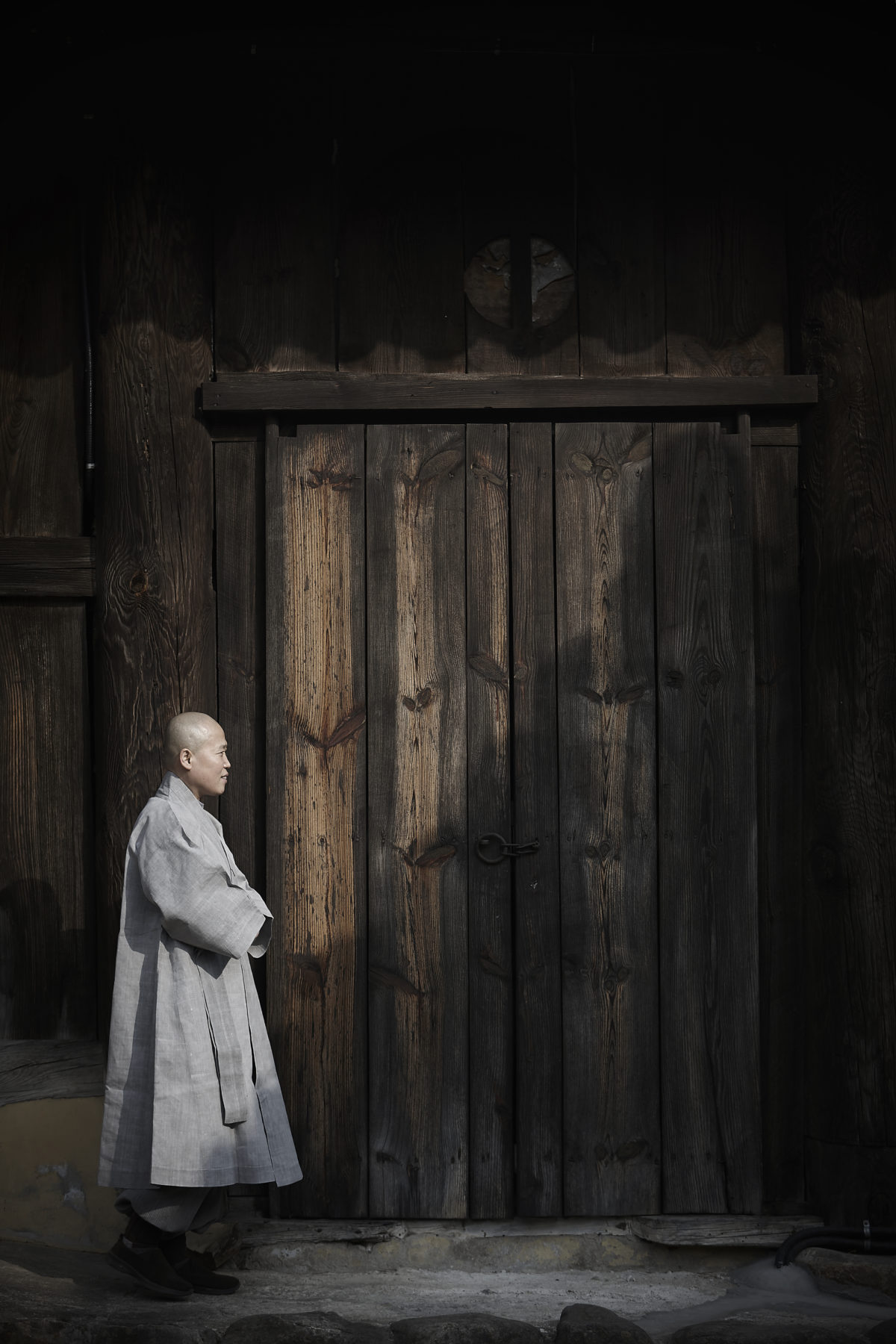

Nature is intact at one hour from Seoul. Finally, it reveals itself, the small temple of Icheon, variegated with orange and celadon green. Nestled in a clearing dotted with cherry blossoms.
Inside, in a spacious kitchen, hidden under a mountain of pots and other XXL cans of soy sauce, Sunim Wookwan moves. Smile on her lips, she kneads a white paste that looks like tofu. In this timeless place, out of sight, this Buddhist nun shares her time between prayer and cooking at Temple Food, which she claims to be “the best food in the world”. A minimalist gastronomy, in keeping with the seasons and what the land offers. But also and especially spiritual since it combines philosophy of Buddhism and Korean culinary tradition.
In just a few years, Wookwan, a 54-year-old hypnotic and solar-faced nun since the age of 24, has become the new world guru of Temple Food.
Born 1700 years ago and originally cooked by the monks for the monks, this soul kitchen was propelled to the forefront by a lecture on the subject in New York. Bloggers and influencers rushed on this cuisine that espouses the times: Simple meals, based on seasonal vegetables, wild herbs or roots, while being tasty, which invite to live in slower mode. Because made in the temple by a nun in a meditative state, the food is imbued with thoughts of gratitude: “I think of people who will taste my cooking, I am in communion with food, and I transmit my own energy” .
The Food Temple is also the time left to the time: time of making sauces (the famous Jang) in January; infinite time of fermentation, a year, sometimes 10 or 20, in huge jars, to raise the taste. Time left for vegetables to flourish in the garden; Time of the tasting too: knowing how to soak up each food to seize all its profits.
At a time when the cooking of some countries is increasingly extravagant, at a time when the consumer is looking for meaning, and pays extreme attention to what he eats and the pollution it generates, this modest food makes new followers every day, especially in the cities on the forefront of healthy food. New York or Hong Kong are today the most beautiful expression grounds of the Food Temple. In dedicated restaurants of course, but also at starred tables, and chefs, like Pascal Barbot, make the trip to meet Wookwan and enrich his recipes like the root cake awakened by a fermented cabbage or the pancake with lotus flower …
Wookwan is endearing. She can capitalize on the magic of her empathy. And visitors who knock at his door to taste are always welcomed with open arms. But she is daring, too. And a bit sassy, perhaps: She understood that to democratize the Food Temple, it was necessary to make it accessible. His credo is to adapt, while respecting its rules. It does not exclude adding a local ingredient in a recipe. A tomato paired with a spicy apple salad for French, for example!
By transgressing – a little – the rules, Wookwan makes Temple Food accessible to the world.
Is it because of the success of the series Chef’s Table Netflix some episodes were dedicated to him? Wookwan was in any case the first to write a book, in English, on this subject. Since then, she has promoted this generous cuisine, in her image, around the world because, if it spread more, “it would reduce, without any doubt, diseases and wars”.
When the kitchen becomes a benevolent weapon.
This travel experience interests me!